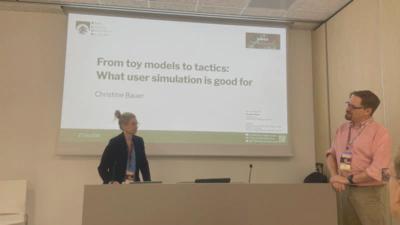
Abstract
Simulations of user interactions play an increasingly important role in information access research. While creating realistic user models that closely mimic real user behavior remains a complex and often elusive goal, simulations with simplified user models can still offer valuable insights. In this talk, I argue that the purpose of user simulations is not always to perfectly replicate real users, but to help us reason about system behavior under varied, often extreme conditions. Simulations allow us to explore questions that user studies or logs alone cannot answer—such as probing the interplay between system components or studying potential long-term effects. At the same time, simulation is not a shortcut—it requires thoughtful consideration of assumptions, objectives, and what level of realism is necessary. I will discuss how toy models can be used to lead to tactical insights, what we lose (and gain) in abstraction, and how simulations can support the design of information access systems that are not just optimized for a narrow set of use cases, but are robust across a range of possible user behaviors.
35131 Padua
Italy
